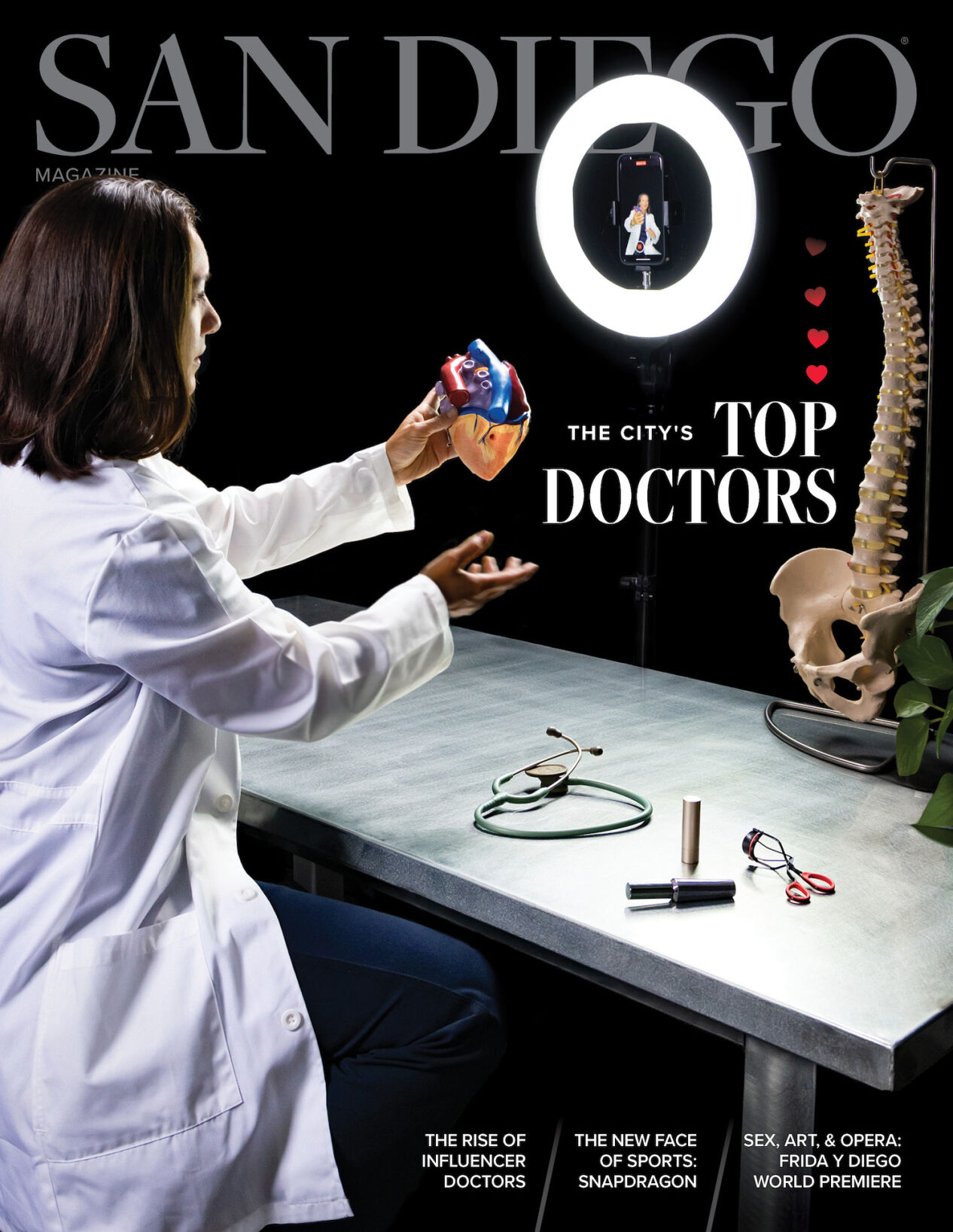
Top Docs Cover
Credit: Stacy Keck
To our readers,
I’m writing today regarding our annual Top Doctors issue that came out this month. Shortly after it reached subscribers, we received a handful of emails from medical professionals who felt the cover image was sexist and an insult.
Within this issue, we discussed The Rise of Influencer Doctors, how San Diego’s top doctors used social media and TV during the pandemic to share essential information and dispel misinformation. It made some of them minor media stars, and forever changed the way we get our healthcare.
The cover art was designed to convey this story. It features a woman doctor holding a model heart, facing an iPhone placed within a ring light. She is presenting to her followers on social media. To drive home the concept of media, we used makeup as a prop on the desk, since wearing TV makeup is standard in such appearances for people—regardless of gender identity. If it were a male doctor, there also would have been makeup on our cover.
The doctors who sent negative feedback felt the presence of makeup had a stereotyping, trivializing, and damaging effect on women doctors. Many expressed an ongoing battle that women physicians face—being judged more for their appearance than their credentials. Our creative team was devastated. At first we thought maybe it was a technical issue. If we had placed the subtitle “Rise of Influencer Doctors” in a more prominent position on the cover, perhaps it would have better driven home our intent.
But the more I listened to doctors and considered their feedback, I realized our intent doesn’t matter, even if it should be expressed for proper context. It’s the impact that matters. Some women doctors were insulted by an image we put on our cover. They felt it belittled their ongoing struggle for equality in their workplace. The most discouraging part for us is that we had intentionally used a woman on the cover to try to elevate women in healthcare. Again, some felt we achieved the opposite.
To any woman doctor who felt belittled by the presence of makeup on our cover and its implications, I am deeply sorry. The purpose of art is to provoke conversation, and the beauty of print media is its permanence. This sparked an important conversation internally here at SDM and hopefully within the community as well.
We’ve invited one of the women doctors who took issue with the cover to write an Op-Ed about it and the larger issue that it has unveiled: gender discrimination within the medical community. We’ll publish her piece on Oct. 26.
I would like to thank the women who reached out. I am deeply grateful to live in a time when women can call women to the table, and we can sit and listen and learn from each other.
Sincerely,
PARTNER CONTENT
Claire Johnson, CEO

















